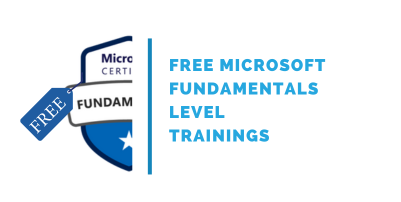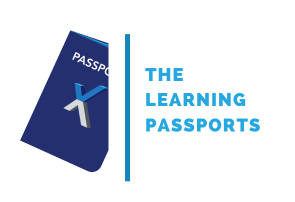
Microsoft Certified: Dynamics 365 Supply Chain Management Functional Consultant Associate (MB330)

In this five-day Microsoft Certified course, participants will cover the most important features and functionalities needed by Dynamics 365 Supply Chain Management functional consultant including: The product information and how to configure, create, and manage your product and inventory, supply chain management configuration and processing, the transportation management features and the warehouse management features, quality management and quality control functionalities and mastering planning configuration and processing.
This training is a comprehensive preparation to the exam MB-330 to earn the Microsoft Certified: Dynamics 365 Supply Chain Management Functional Consultant Associate.

Public class
Duration:
7 jours / 49 heures
Private class
Virtual classroom
Minimum no. of participants: 5
5 days / 35 hours
Price on request
English or French
Training plan:
Microsoft Dynamics 365 Supply Chain Management Functional Consultant (MB-330T00)
Module 1: Get started with Dynamics 365 Supply Chain Management
- Benefits of Supply Chain Management
- Overview of Supply Chain Management
- Cost accounting
- Cost management
- Inventory management and Warehouse management
- Master planning
- Procurement and sourcing
- Vendor collaboration
- Sales and marketing
- Customer portal
- Product information management
- Production control
- Intercompany trade
- Warehouse management
- Transportation management
Module 2: Configure and work with inventory management in Dynamics 365 Supply Chain Management
- Inbound operations
- Outbound operations
- Configure inventory dimensions
- Configure storage dimensions
- Configure tracking dimensions
- Configure serial and batch numbers
- Allocate batch and serial numbers
- Configure sites
- Configure warehouses
- Transfer orders
- Set up bar codes
- Set up default order settings
- Inventory journals
- Work with journals
- Inventory journal approval workflows
- Work with reason codes
- Work with consignment inventory
- Configure item groups and item model groups
- Inventory cost methodologies
- Configure inventory policies
- Inventory closing and adjustment
- Archive inventory transactions
- Work with reason codes for inventory counting
Module 3: Use inventory reports in Dynamics 365 Supply Chain Management
- ABC inventory classification
- Physical inventory by inventory dimension report
- Inventory value report
- Inventory on-hand report storage
- Inventory on-hand mobile workspace
Module 4: Create products and product masters in Dynamics 365 Supply Chain Management
- Product information workspace
- Concept of a product
- Create products
- Set up unit conversions
- Batch disposition codes
- Default order settings
- Define products as not stocked
- Create product masters with variants
- Gain productivity by using the Variant suggestions page
- Create and set up category hierarchies and attributes
- Set up item pricing
Module 5: Create bill of materials in Dynamics 365 Supply Chain Management
- Work with the BOM designer
- BOM and formula versions
- BOM line types
- BOM levels
Module 6: Configure and perform the procure-to-purchase process in Dynamics 365 Supply Chain Management
- Procurement scenario
- Overview of the procure-to-purchase process
- Use procurement catalogs
- Create a purchase requisition
- Create and process a request for quotation
- Create purchase orders
- Vendor categories and catalogs
- Evaluate a vendor and put a vendor on hold
- Use purchasing policies
Module 7: Configure and manage vendor collaboration in Dynamics 365 Supply Chain Management
- Purchase order statuses with vendor collaboration
- Configure vendor collaboration
- Maintain vendor certification
- Set up vendor collaboration security roles
- Use the Vendor collaboration invoicing workspace
- Define purchase order response information
- Work with purchase orders when vendor collaboration is used
- Purchase order statuses and versions
- Sharing information about consignment inventory
- Work with request for quotes
- Purchase order confirmation workspace
- Accessing vendor master data in the Vendor information workspace
Module 8: Process purchase orders in Dynamics 365 Supply Chain Management
- Set up purchasing parameters
- Use purchase order change management
- Use Item arrivals and Arrival overview
- Manage over/under delivery for purchase orders
- Manage charges for purchase orders
- Create vendor returns
Module 9: Configure and work with quality control and quality management in Dynamics 365 Supply Chain Management
- Configure quality management
- Perform quality control and management processes
- Apply inventory blocking
- Perform quarantine management
Module 10: Configure and use agreements in Dynamics 365 Supply Chain Management
- Work with trade agreements
- Create sales agreements
- Create purchase agreements
- Configure trade allowance management
- Configure brokerage contract management
- Configure royalty contract management
- Configure vendor rebates
- Rebate management module
Module 11: Configure and use intercompany trade in Dynamics 365 Supply Chain Management
- Intercompany trading
- Set up intercompany trade
- Process intercompany chain orders
- Set up intercompany agreements and direct deliveries
Module 12: Configure and manage the order to cash process in Dynamics 365 Supply Chain Management
- Sales and marketing overview
- Create and confirm sales quotations
- Create and process sales orders
- Sales order entry scenarios
- Sales order picking processes
- Configure order promising
- Configure order hold codes
- Process customer returns
- Sales order reservations
- Configure and use commissions
- Configure customer and item search
Module 13: Configure warehouse management in Dynamics 365 Supply Chain Management
- Roles in warehouse management
- Set up warehouse management
- Configure the warehouse layout
- Configure catch weight processing for warehouse management
- Warehouse processes
- Reservation hierarchies
Module 14: Work with warehouse management in Dynamics 365 Supply Chain Management
- Configure mobile device setup
- Set up and deploy GS1 and QR bar codes
- Configure work type menu items
- Configure mobile app step instructions
- Inbound operations
- Cycle counting
- Transfer orders and replenishment
- Outbound operations
- Warehouse work
- Material handling equipment interface
- Sales order picking and consolidated shipments
- Cluster picking
- Packing and containerization
Module 15: Configure and use built-in master planning in Dynamics 365 Supply Chain Management
- Master planning considerations and setup
- Master planning parameters page
- Create a master plan
- Demand forecasting
- Coverage settings
- Action messages
- Configure intercompany planning
- Run plans and firm planned orders
- Set up and use the Supply schedule page
Module 16: Use Planning Optimization in Dynamics 365 Supply Chain Management
- Install the Planning Optimization Add-in
- Integration and fit analysis
- Apply filters to a plan
- Master planning with demand forecasts
- Planning optimization support for capability-based resource allocation
- Priority-based planning
- Master planning and purchase trade agreements
- Safety margins
- Coverage time fences
- Approved planned orders
- Generate planned production orders
- Analyze and approve planned orders
- Auto-firming
- Planning with negative on-hand quantities
- View history and planning logs
- Cancel a planning job
Module 17: Manage transportation management in Dynamics 365 Supply Chain Management
- Planning transportation management
- Configure transportation management
- Routing and transportation flows
- Load building strategy
- Transportation management engines
- Bill of lading
- Plan freight transportation routes with multiple stops
- Reconcile freight in transportation management
Exclusives:
- One FREE attendance to the Microsoft 365 Certified: Fundamentals (MS900) training - $695 value!
- One voucher to take the exam - $225 value!
- One year access to the class recording
- 180 days access to the lab environment after class
- Up to date courseware with Microsoft Learn
- Microsoft course achievement badge
Prerequisites:
- General knowledge of Microsoft Windows
- The ability to use Dynamics 365 for Finance and Operations for basic processing and navigation
- Experience being a functional or technical consultant who has used Dynamics Finance Apps to gather and analyze business requirements
- General knowledge of basic mobile device features and navigation
- The student should be able to take a synchronous, virtual course and communicate feedback in a positive, constructive manner
Credentials information:
Exam characteristics:
- Exam code: MB-330
- Cost: 0$ (included in your training)
- Skills measured
- Describe finance and operations apps, and extend apps by using Microsoft Power Platform technologies
- Configure administrative features and workflows
- Manage finance and operations data
- Validate and support solutions
- Implement product information management
- Implement inventory and asset management
- Implement and manage supply chain processes
- Implement warehouse management and transportation management
- Implement master planning
Follow-on trainings:
Audiences:
Contact us for more information on pricing::
Eccentrix
Office: 1-888-718-9732
E-mail: info@eccentrix.ca
130, King Street West, Suite 1800
Toronto, Ontario M5X 1E3
www.eccentrix.ca



